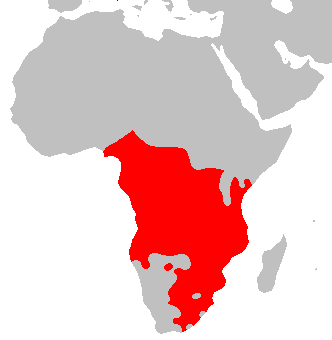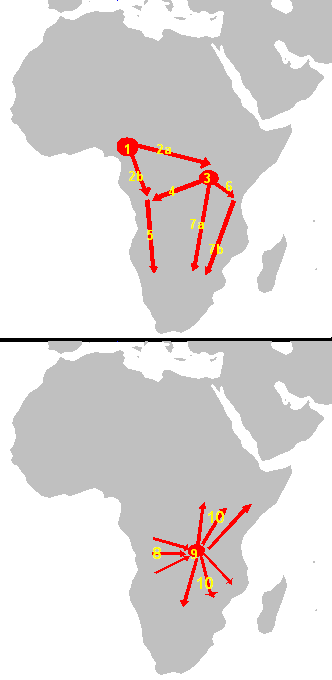BANTU EXPANSION IN AFRICA
While the civilizations of the Nilotic area were prospering and developing, around 2000 BC or 1500 BC, the first Bantu migration to the tropical forests of Central Africa began, from a location in the southeast of present-day Nigeria and Cameroon. This was likely caused by demographic pressure from Saharan populations fleeing desertification. The second phase of migration, about a thousand years later, around 1000 BC, brought them to southern and eastern Africa. The Bantu, who were breeders and semi-nomads, migrated southward, where they both mixed and clashed with local hunter-gatherer populations. Their movement continued until they reached the region inhabited by Khoisan-speaking people in southern Africa. These events explain the ethnolinguistic map of present-day Africa.

Area of Bantu languages.

1 = 3000–1500 BC, origin
2 = approx. 1500 BC, first migrations
2.a = Eastern Bantu, 2.b = Western Bantu
3 = 1000—500 BC, Urewe, the core of Eastern Bantu
4–7 = advance south
9 = 500 BC—0, Congo core
10 = 0—1000 AD, last phase147.
For more information:
https://fr.wikipedia.org/wiki/Portail:Afrique
https://en.wikipedia.org/wiki/Africa
https://journals.openedition.org/etudesafricaines/
https://etudes-africaines.cnrs.fr/
https://www.afdb.org/fr/documents-publications/economic-perspectives-en-afrique-2024





